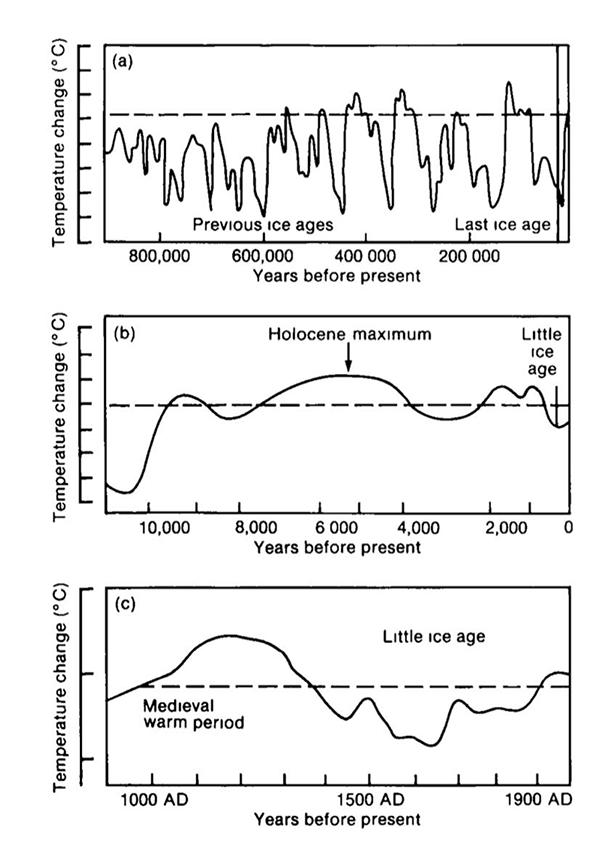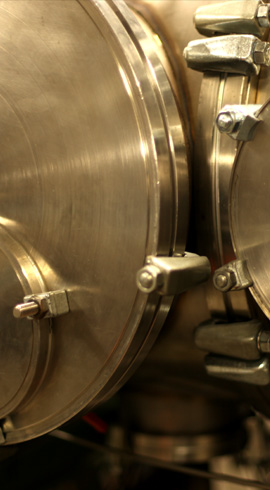Le bulletin
A few remarks about energy transition
Alain Rouet (Science & Tec)
Introduction
Introduction
During the last century electricity has been mostly generated from hydropower on the one hand and by thermal (including nuclear) power plants on the other. Within these thermal plants, water is boiled and the steam sent to a turbine.
In this note energy transition means the trend to replace a large part of these thermal power plants by renewable sources.
Carnot’s principle, large power plants and electric network with few production nodes.
Whenever we heat up water, boil it and send the steam to a turbine, we are turning heat into mechanical energy and thermodynamics tells us we need a hot source and a cold source. The cold source may be the river or the atmosphere and its temperature is ambient. Increasing the yield thus requires increasing the hot source temperature which will be limited only by the cost of the materials (350°C is a typical temperature).
Due to this high temperature, thermal losses are high, which leads for various reasons to increase the size as much as possible. Power demand being a given, a rather small number of large plants produces enough power. For instance, in France, about 75% of the electricity is produced by 58 nuclear reactors located in only 19 plant sites.
As a result, the high voltage electrical network has few production nodes.
Renewable sources: The intermittency challenge
Power sources are called intermittent whenever the power they produce is not predictable within a reasonable time. Some renewable sources are not intermittent (although they may be seasonal), among them hydroelectricity, while wind power or solar power are intermittent, at least in most places, particularly in Europe.
Intermittency generates two kinds of problems.
1°) “How can we face a lack of power (whenever there is no wind, no sun)?” This is an easy problem, for instance gas turbines may be run, using methane produced by wind power (see below carbon-neutral methane production). It is just a matter of capital investment (the gas turbine then is part of the wind power investment).
2°) “How can we face an over-production, whenever we produce more electricity than the consumers’ demand?”
This point requires some specific attention. A thermal or nuclear power unit requires some (predictable) maintenance shutdowns. For a nuclear installed power of 100 (arbitrary units) the effective power all over the year is around 75 (same units). For an installed power of 100 with wind turbines, the effective power over the year is around 22, (and 13 for photovoltaic solar power). Let us accept a very optimistic order of magnitude at 25% for the following discussion (1).
For the sake of simplicity, let us assume a goal in actual annual figures of 50% nuclear power and 50% wind power. Let us assume the electricity demand to be constant over the entire year, at 200 (arbitrary units) per year. Nuclear plants must produce 100 during the year, which requires 133 installed nuclear power. Wind turbines must produce 100 during the year, which requires 400 installed wind power.
Within this crude model, at a given time
- Power consumption is 200,
- Produced nuclear power is 100 (maintenance shutdowns are assumed to be properly balanced all over the year),
- Produced wind power is something between 0 and 400.
Whenever the produced wind power is 100, offer and demand are balanced. Whenever the produced wind power is 0, gas turbines may be run. Whenever the produced wind power is 400, the global production is 500 for a consumption of 200, 2.5 times what we need.
Naïve people claim storage (using batteries) to be the solution. Pure nonsense! Let us consider some crude figures: French electricity production in 2015 is 546 TWh (1), on average roughly 1.5 TWh per day. Let us consider the case of one day with full overproduction, storage need is 1.5 x 2.5 = 3.75 TWh. The existing storage capacity of existing batteries is between 40 and 200 Wh per kilogram (2). Let us adopt the very optimistic figure of 500 Wh / Kg for the future, we’ll need 7.5 106 tons of batteries for storing one day of full overproduction. Electricity storage by batteries is no more than quite a small part of the solution. And so are other storage solutions (pumped hydro storage, compressed air energy storage, flywheel and so on). Each solution is of some interest, but even considered all together they don’t bring the capacity we need.
Wind power needs capital investment, but operational costs are small. Whenever over production occurs, electricity is almost free of charge. This free electricity may be used (for instance) for producing hydrogen by electrolysis and also for producing methane (CO2 recuperation, for instance, might be the carbon source).
We thus get “carbon-neutral” methane for gas turbines and other applications, and “carbon- neutral” hydrogen for chemical applications, for combustion, and for cars!
Let us note that if hydrogen had to be produced in a centralized plant and then distributed to the existing gas stations, hydrogen transportation would require so many trucks that it would saturate the roads network. This problem does not exist if the main gas stations produce their hydrogen on site. This is quite possible, and may play a part in the solution of the intermittent overproduction challenge.
Renewable intermittent sources: The electrical network challenge
We discussed above the reason why the high voltage network has few production nodes: a small number of huge power plants for thermodynamic reasons.
Considering now wind power plants, mechanical force (wind) is turned into mechanical force (alternator), small units may have a good yield and a distributed network with many nodes (hundred or thousand times more than today) can make sense. We may for instance imagine an electrolysis unit in each gas station which produces hydrogen for cars on site (this is no more than an example).
Stabilizing an electrical network with such a high number of nodes (distributed network) is a real challenge, although it is within the scope of existing technologies (may be after ten years of work for thousand scientists and high level engineers).
Moreover, intermittency will anyway destabilize the existing network, and increasing the share of intermittent power sources without drastically changing the control of the existing network will definitely lead to its disruption. The readers of this note know what instability means (in its pure mathematical meaning) (3).
A new paradigm
Yesterday, we had a network with few production nodes. Electricity production had to match the demand. Its price was fixed. Electricity applications were established.
Tomorrow, the network will have thousands of nodes. Electricity production will fluctuate depending on the wind or the sun, its price will vary from almost zero to a high value, and demand will have to match production. Electricity applications will multiply, depending on the compromise between price and flexibility. This will give rise to a burst of new services. The price to be paid is the design of a stabilized distributed network, which is feasible within the state of the art, yet a huge amount of work has to be done. Those who will design such a network will get a large part of the added value to be generated by the energy transition.
Priests, soldiers and merchants: why energy transition will go on.
Priests never changed the world, only soldiers and merchants did.
Holy inquisition’s credo is known: Life will disappear from earth because of global warming, this global warming is scientifically proven to be generated by human activities, and any given hurricane everywhere in the world is due to the climate change.
The figure below, extracted from the excellent book “a cultural history of climate” by Wolfgang Behringer (4), is better than any comment for the first point.
The second point is quite a reasonable conjecture; if this had to be called a proof, quantum field theory and mathematics would become easy.
At last, weather is highly nonlinear, with induced sensitivity to initial conditions: imagine you are tossing with a fake coin giving heads 60% of the time. You toss once, it gives heads, is it because the coin is a fake one, or because you had already 50% chances to get heads with a fair coin? The question is stupid as the third point above.
However, even with a soft version of religion, even being an agnostic, it must be recognized that the smog in large Chinese cities is presumably not good for health and definitely harmful for the quality of life, that it has never been a good idea to throw away one’s garbage (including CO2) into the street or in the air, that fossil resources will eventually become rare and expensive. Environmental issues may thus trigger public opinion to support the energy transition needed for strategic and economic reasons.

The strategic point of view is important: A network with few production nodes can easily be disrupted. Disconnecting part of the power sources from the network would be enough. In France, 19 nuclear sites produce 75% of the electricity. An act of sabotage of the links between ten plants and the network would generate a serious electrical black out in Europe, with dramatic economical induced damage. On the contrary, a distributed network would be quite robust against such an attack, (for a well studied structure of the network that depends not too much on a small number of nodes).
Anyway, economy rules the game. We are contemplating complex hardware/software systems composed of energy production units, energy transportation, utilities consuming energy. An energy production hardware market does exist: Wind machines, blades, solar cells, more or less the analogue of the personal computers market a few decades ago. Quite more interesting is what is referred to as ENERNET (5) (to be understood in an extensive way), namely the network control. It will eventually generate companies similar to MICROSOFT. And above all, there is everything which can be done using a distributed electrical network, for instance the hydrogen business quoted above. This is the analogue of INTERNET applications, a huge market for all kinds of big and small business.
The potential business is so big, and the investments already paid so important, that the game is over, energy transition will occur. Not sure that Europe will succeed in getting a reasonable share of this fantastic cake.
References
(1) All the useful numbers may be found on www.rte-france.com
(2) Renaud Bouchet private communication
(3) Marc Barthelemy, Physics Reports, 499 (2011) 1-101
(4) Wolfgang Behringer, a Cultural History of Climate, translated from German by Patrick Camiller, Polity Press, 2010, reprinted 2013
(5) ENERNET is the name initially given by Bob Metcalfe. See for instance https://www.youtube.com/watch?v=cA811EPzwLI
Previous page: CV Alain Rouet
Next page: Liens Science & Tec

